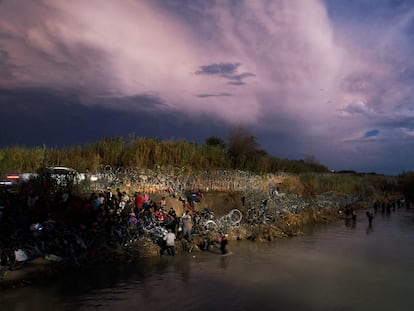Ciudad Juárez isn’t afraid of Biden’s wall: ‘There’s more fear of being detained in Mexico and getting deported back to our country’
At the largest border crossing in the country, the memory of the recent deaths of 40 migrants — who were killed during a fire in a detention center — is more painful than the new security measures being implemented by the U.S. government
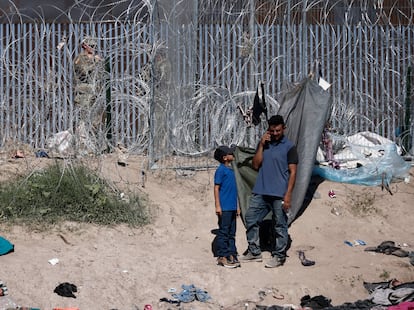

Antonio, Wilmer and Rayder are barely 20-years-old. They’re biding their time, hanging out in a kind of trench. Leaning on a mound of earth, they have the border with the United States just a foot away from them. You can see the river and the American police officers protecting the fence. Since they left their small town in Venezuela more than two months ago, they’ve longed to cross over. But, for the moment, they prefer to wait. “Until those idiots from the Mexican immigration leave,” Antonio mutters, while he changes out of his old sneakers and puts on a pair of flip-flops. He thinks they’ll be better for crossing the water.
Just before the river, there are four vans from the Mexican immigration agency. The three friends have had bad experiences with officers from this agency while traveling across the country. “They robbed us several times. They’re more corrupt than in Venezuela!” All three young men acknowledge that they’re more afraid of the unarmed Mexican agents than of the military police who carry assault rifles on the American side of the border.
A similar feeling is shared by the more than 10,000 migrants waiting in Ciudad Juárez, the most populated center along the Mexican border. In addition to stories of abuse and violence during their extreme journey across the country, the migrants’ fear is also backed up by numbers. Mexico has accelerated deportations — which have grown by more than 20% in August alone — according to the latest available data.
In Ciudad Juárez, the trauma of one of the greatest recent migrant tragedies hasn’t yet been forgotten. At the end of March, 40 men died in a fire at a detention center for migrants. No one opened the door for them — and no one has been punished for what happened. “We have friends who are already there [in the United States] and they tell us that they’re being treated much better than here,” Wilmer notes, without losing sight of the Mexican officials’ vans.
A few weeks after that tragedy, Title 42 came to an end. It had been put into force as an exceptional measure for health reasons during the pandemic, before it was extended. Title 42 allowed for the immediate deportation of those crossing the border, without any procedure. Since it expired, however, the number of migrants has been increasing. Official figures from the U.S. Border Patrol threaten to break all recent records. It’s forecasted that, by the end of 2023, there will have been more than 300,000 recorded arrests this year.
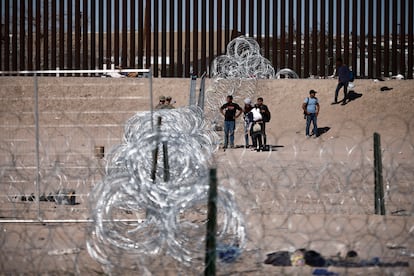
The influx has increased pressure on President Joe Biden and his Democratic Party, in the lead-up to the 2024 presidential elections. In addition to reinforcing police along the 1,900-mile-long southern border — with 25,000 extra agents being deployed since May — the president added another measure that, until now, seemed anathema to his party: building 20 miles of fence in the south of Texas. Biden has thus abandoned one of the promises that he made upon reaching the White House in 2021: “no more American taxes will be used to build a wall.” He had sought to put an end to Donald Trump’s heavy-handed policy.
Despite the latest measure announced by the United States, the perception within the Good Samaritan shelter — on the outskirts of Ciudad Juárez — is that the most obvious danger is still on the Mexican side of the border. “We’re more afraid that they’ll arrest us in Mexico and deport us back to our country,” says Brisel, a 25-year-old Honduran who left Tegucigalpa with her family to escape death threats. Her husband had a metalwork shop: the mafias demanded $40 a week from him, more than half of the money he earned in the small business.
They’ve been at the Mexican border for almost three weeks. They’ve requested political asylum and are waiting for confirmation of the appointment through the digital application that the U.S. launched a few months ago. Meanwhile, she and her two small children barely leave the shelter. “My husband leaves in the mornings, because he found work in construction. But I don’t go out. I’m afraid. The Mexican police also robbed us and beat us along the way,” she explains, while searching through a bag of donated clothes that just arrived at the shelter.
The fire
More than six months after the fatal fire that claimed the lives of 40 men, the migrant detention center where the tragedy occurred is sealed. But you can still see the black marks on the walls, which are visible through the narrow windows and the metal door that the guards locked before escaping. Despite the mountain of negligence, only seven people — including custodians and regional directors from the National Migration Institute (Inami) — are being prosecuted for different crimes in relation to the case. This includes the director of the organization, Francisco Garduño, who is charged with abusing his authority as a public official.
While the slow machine that is Mexican justice chugs along, Garduño remains at the head of the agency. In August, he returned to Ciudad Juárez in the midst of the umpteenth crisis. The company that manages the freight trains that migrants board to travel north — including the disastrous and infamous “Beast” — announced that it was suspending activities, due to the crowds that kept gathering and the dangers of train-hopping that were increasingly evident. Garduño limited himself to promising a greater police presence on the trains, while announcing the inauguration of a new shelter with space for 500 migrants. When consulted by EL PAÍS, the Inami did not respond to questions about its current “rescue” policies — a euphemism for the migrant detentions.
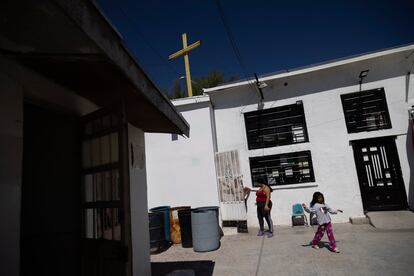
“The fire episode tells us that the strategy of attempting [to achieve] socioeconomic integration for the large groups of migrants that the city receives has long since ended,” says Jesús Peña, a researcher at the Colegio de la Frontera Norte (COLEF, the College of the Northern Border). During the years of the Trump administration — when the U.S. government forced asylum seekers to wait on the Mexican side of the border for their cases to be processed, even if this took months or years — Ciudad Juárez attempted to find accommodation for the migrants.
During that four-year-long period, migrants were given work permits while their applications were being processed. Some found work in the Juárez maquilas — the cheap labor factories near the border. “Now, all that’s over. [The Mexican government is increasing] deportations, which will increase distrust among migrants, pushing them underground. That is, into the arms of the human-trafficking mafias,” Peña adds.
In the center of Ciudad Juárez, you can see groups of migrants carrying blankets and plastic bags on their shoulders. The shelters are almost full — many prefer to look for cheap motels as close as possible to the border crossing, or for parks where they can spend the night. Sometimes, they find makeshift accommodation in the city’s red-light district, between brothels and money-exchange agencies.
Long ago, Ciudad Juárez was afflicted by a stigma that still persists. It became a black hole for hundreds of women, who were murdered or declared “missing” in the 2000s. Juárez has also been the scene of one of the most barbaric wars between drug-trafficking mafias. In 2010, it reached number one on the list of cities with the highest homicide rate in the world. And today — amidst the wave of generalized violence that is once again hitting Mexico — it occupies first place again.
Juárez is the largest city on the U.S.-Mexico border, with a million-and-a-half inhabitants — almost triple that of its Texan neighbor, El Paso. But the city wasn’t always feared. In the 1970s, it was known as Mexican Las Vegas, for its party halls and nightlife. The arrival of the maquilas engulfed the small town that previously lived on cotton and alcohol sales. In the 1990s — coinciding with the signing of the free trade agreement with the United States and Canada (NAFTA) — the population practically doubled. Juárez became a city filled with Mexican workers and migrants. And, in recent years, migrants from Central America, Venezuela and Africa have also arrived.
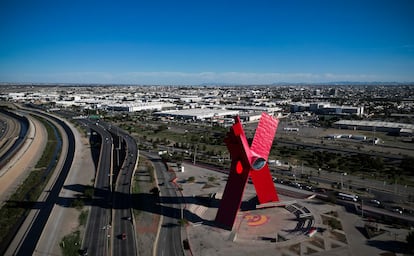
Sign up for our weekly newsletter to get more English-language news coverage from EL PAÍS USA Edition
Tu suscripción se está usando en otro dispositivo
¿Quieres añadir otro usuario a tu suscripción?
Si continúas leyendo en este dispositivo, no se podrá leer en el otro.
FlechaTu suscripción se está usando en otro dispositivo y solo puedes acceder a EL PAÍS desde un dispositivo a la vez.
Si quieres compartir tu cuenta, cambia tu suscripción a la modalidad Premium, así podrás añadir otro usuario. Cada uno accederá con su propia cuenta de email, lo que os permitirá personalizar vuestra experiencia en EL PAÍS.
¿Tienes una suscripción de empresa? Accede aquí para contratar más cuentas.
En el caso de no saber quién está usando tu cuenta, te recomendamos cambiar tu contraseña aquí.
Si decides continuar compartiendo tu cuenta, este mensaje se mostrará en tu dispositivo y en el de la otra persona que está usando tu cuenta de forma indefinida, afectando a tu experiencia de lectura. Puedes consultar aquí los términos y condiciones de la suscripción digital.
More information
Archived In
Últimas noticias
Chris Martin, Taylor Swift, Elijah Wood and other famous wedding ‘crashers’
‘How does it feel to be a failure?’: Elizabeth Berkley’s journey from ‘Showgirls’ ridicule to vindication
The story of the Málaga virus: The code that haunted Google’s cybersecurity center director for 30 years
The impact of Ecuador’s mega-prison: A polluted river, cleared forests and military checkpoints
Most viewed
- Christian Louboutin: ‘Young people don’t want to be like their parents. And if their parents wear sneakers, they’re going to look for something else’
- The low-cost creative revolution: How technology is making art accessible to everyone
- Liset Menéndez de la Prida, neuroscientist: ‘It’s not normal to constantly seek pleasure; it’s important to be bored, to be calm’
- All the effects of gentrification in one corner of Mexico’s Colonia Roma
- December Social Security and SSI payments: Dates, double checks and the 2026 COLA increase

